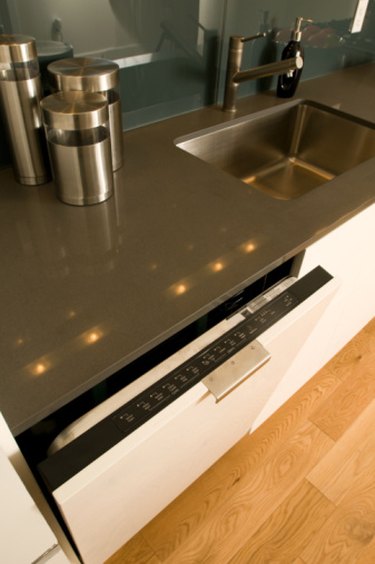Things You'll Need
Screwdriver
Pigtail electrical cord

Many dishwashers use an electrical connection called a "direct wire." This means the dishwasher uses standard electrical wire to connect directly from the terminal block on the dishwasher to the breaker box in your home. However, if you have an electrical outlet under your counter where you plan to install your dishwasher, you can forgo the direct connection and install a standard pigtail plug on your dishwasher.
Step 1
Locate the terminal block cover on the back of the dishwasher. You can locate the cover easily because there will be an "electrical shock" warning sticker on the cover or beside it. Remove the screws that hold the cover in place, using a screwdriver, and place the cover off to the side.
Video of the Day
Step 2
Slide the end of the cord with the bare wires protruding from it through the hole in the terminal block. Tighten the two retaining screws on the clamp secured to the hole. Use a screwdriver for this procedure. This holds the cord in place.
Step 3
Loosen the ground screw. In most cases, the screw is green. If not, the screw is still easily identifiable because it does not connect to a terminal — it secures to the metal housing of the terminal block.
Step 4
Wrap the bare end of the green or bare wire around the screw and then tighten the screw in place.
Step 5
Secure the black wires together with a wire nut and then tape the wire nut to the wires with electrical tape. If your terminal block has terminal screws, wrap the black wire from the cord around the terminal screw labeled for power and then tighten the screw.
Step 6
Secure the white wires together with a wire nut and then tape the wire nut to the wires with electrical tape. If your terminal block has terminal screws, wrap the white wire from the cord around the terminal screw labeled for neutral and then tighten the screw.
Step 7
Place the cover back on the terminal block and secure it with the screws.
Video of the Day